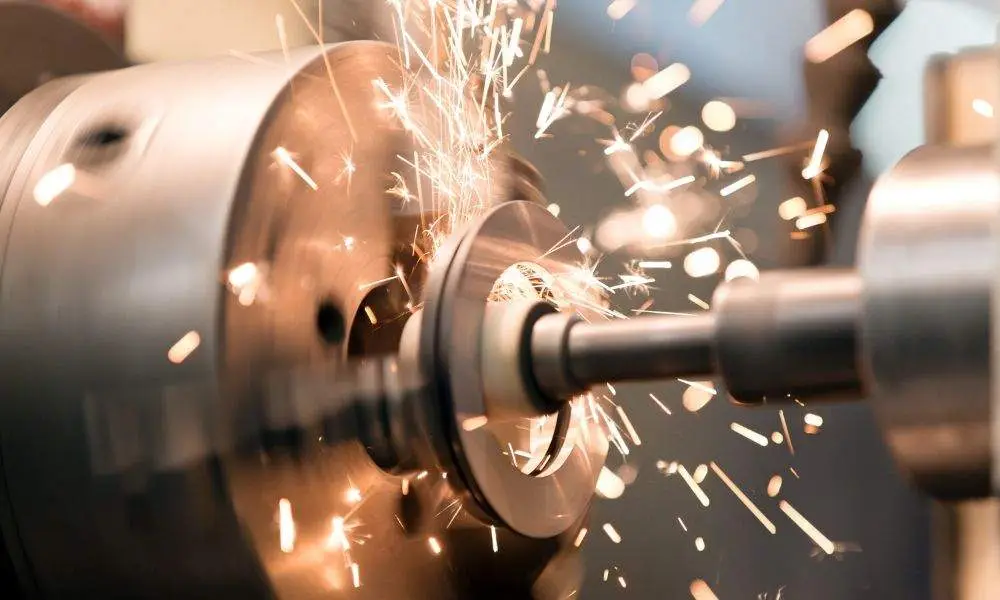Fasteners and Machining: Simplifying the Production Process
Fasteners and Machining: Simplifying the Production Process
Blog Article
Understanding the Art of Fasteners and Machining: Technologies and Best Practices
In the realm of industrial production and engineering, the proficiency of bolts and machining is a foundation of ensuring architectural stability, performance, and durability in different applications. Join us as we explore the most current developments and dive right into the nuanced world of grasping fasteners and machining, revealing essential understandings and approaches that can elevate your method to design options.
Advancement of Fastening Technologies
Throughout the commercial transformation and right into the modern age, the development of securing modern technologies has been marked by constant improvements in effectiveness and integrity. Fasteners, such as rivets, screws, and screws, play a vital function in different industries, consisting of automotive, aerospace, building, and electronic devices. The demand for stronger, much more resilient, and easier-to-install attachment services has actually driven development in the field.
One significant advancement has been the shift in the direction of precision machining methods to create fasteners with greater resistances and premium efficiency. This change has actually made it possible for makers to create bolts that satisfy stringent top quality criteria and offer increased resistance to deterioration and exhaustion.
Furthermore, the intro of advanced materials, such as titanium alloys and compounds, has actually reinvented the capabilities of fasteners. Fasteners and Machining. These materials supply phenomenal strength-to-weight ratios, making them suitable for applications where decreasing weight is essential without compromising architectural honesty
Innovations in Machining Methods
In the realm of industrial manufacturing, the continuous advancement of machining methods has actually led the means for unmatched precision and efficiency in the production of fasteners. This specific control makes it possible for suppliers to create complicated and complex fastener designs with convenience.

Additionally, the adoption of multi-axis machining centers has made it possible for synchronised cutting procedures from different angles, further improving effectiveness and lowering manufacturing times. By using these sophisticated machining methods, manufacturers can fulfill the enhancing need for top notch bolts while maintaining cost-effectiveness in their procedures.
Choosing the Right Bolt Materials
Choosing the proper material for fasteners is a critical decision that dramatically affects the performance and longevity of the put together components. When picking the right bolt material, a number of elements should be thought about to make certain the durability and integrity of the end product. The material selected need to work with the environmental problems the fasteners will certainly be exposed to, such as temperature variations, dampness levels, and corrosive elements.
Typical materials used for fasteners include stainless steel, carbon light weight aluminum, titanium, and steel, each offering distinct residential or commercial properties that fit various applications. Stainless steel, for instance, is recognized for its corrosion resistance, making it optimal for exterior or aquatic settings. Carbon steel is an affordable choice suitable for numerous general-purpose applications. look these up Light weight aluminum is lightweight and typically utilized in industries where weight is a crucial factor. Titanium, on the various other hand, is extremely strong and corrosion-resistant, making it appropriate for high-performance applications.
Enhancing Accuracy in Machining
Attaining optimum accuracy in machining is vital for guaranteeing the high quality and performance of machined components. Accuracy in machining refers to the capability to continually create parts within limited resistances and with high precision. To improve accuracy in machining, producers use a variety of advanced techniques and technologies. One key technique is using Computer Numerical Control (CNC) equipments, which supply remarkable accuracy and repeatability contrasted to standard hands-on machining methods. CNC equipments are programmable and can execute intricate machining operations with very little human intervention, resulting in greater accuracy levels.
In enhancement to CNC machining, making use of advanced cutting devices and device owners can likewise dramatically improve precision. Top notch cutting tools with innovative coverings reduce rubbing and wear, causing more specific cuts and dimensional accuracy. Applying rigorous high quality control measures throughout the machining procedure, such as routine inspections and calibration of tools, aids maintain regular precision degrees. By prioritizing precision in machining, suppliers can achieve premium product top my sources quality, tighter resistances, and improved general performance of machined components.

Best Practices for Bolt Installment
Accuracy in machining plays a crucial duty in making sure the dependability and durability of fastener installments. One crucial element is the appropriate selection of fasteners based on the certain application needs when it comes to ideal methods for bolt installment. Using the correct type, dimension, and material of bolt is vital to guarantee optimal efficiency and durability. Fasteners and Machining. Additionally, it is vital to adhere to supplier standards and advised torque worths during the installment process to stop over-tightening or under-tightening, which can bring about premature fastener failing.
Furthermore, guaranteeing that the fastener strings are free and tidy of particles before setup is essential to achieving a safe and effective link. By adhering to these best methods, producers can optimize the integrity and performance of their bolt installments.
Final Thought
By picking the ideal fastener materials and enhancing precision in machining, makers can achieve optimum results in their operations. Generally, understanding the art of fasteners and machining involves constant technology and adherence to ideal techniques.
In the realm of commercial production, the continual advancement of machining techniques has paved the means for unmatched accuracy and efficiency in the production of fasteners.Accuracy in machining plays a critical function in ensuring the reliability and durability of Your Domain Name fastener installments. When it comes to finest techniques for fastener setup, one essential aspect is the proper choice of fasteners based on the particular application demands. By picking the right fastener products and enhancing precision in machining, manufacturers can accomplish optimal outcomes in their operations. In general, understanding the art of fasteners and machining involves continual technology and adherence to best methods.
Report this page